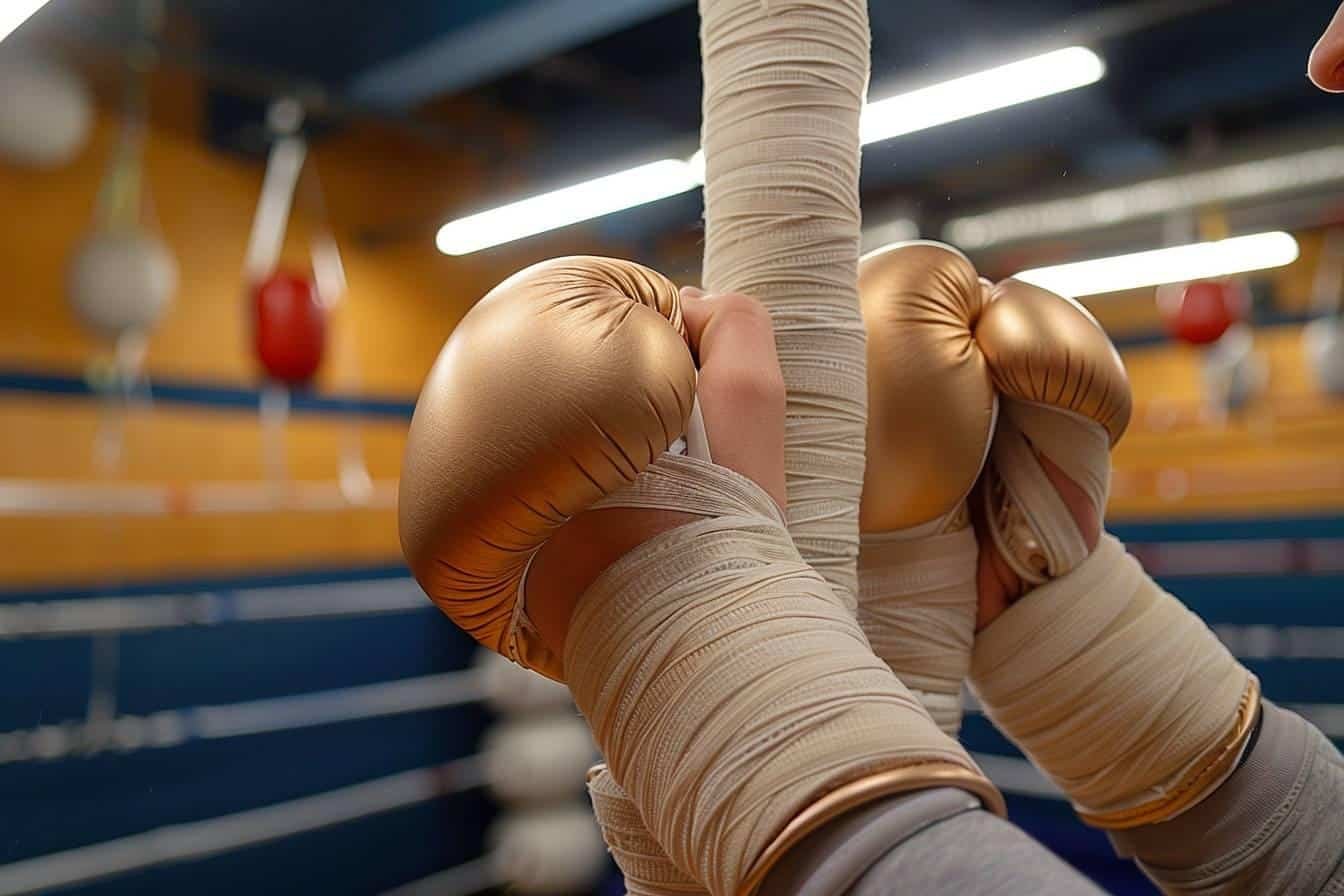The article in brief
The strips under the
- They protect against impact and reduce the risk of injury
- They provide stability and support for joints
- They improve comfort by creating a soft interface between the skin and the glove
- They enablerefine your technique by increasing the sensitivity of blows
The strips under the
Protection and comfort: the major advantages of boxing belts
A barrier against impact
The use of strips under the
Stability and joint support
The bands provide invaluable support for the joints during exercise. They keep the wrist firmly in line, reducing the risk of sprains or strains. This increased stability means boxers can strike with greater confidence and power, without fear of injury.
Optimum comfort
Comfort is an aspect often overlooked, but crucial to performance. The strips create a soft interface between the skin and the glove, preventing painful rubbing. They also absorb perspiration, keeping hands dry and gloves hygienic. This increased comfort means you can concentrate more on your technique and training.
Choosing and using boxing belts effectively
Selecting the right type of belt
There are different types of belt, each with its own advantages:
- Cotton strips: classic and breathable
- Mexican elastic straps: for better support
- Gel strips for optimum shock absorption
The choice will depend on your personal preferences and the intensity of your practice. For beginners, cotton bands are often recommended for their ease of use.
The ideal length
The length of the bands is an important factor to consider. Here is a summary table of recommended lengths according to level of practice:
| Level of practice | Recommended length |
|---|---|
| Beginner | 2.5 - 3 metres |
| Intermediate | 3.5 - 4 metres |
| Advanced / Professional | 4 - 4.5 metres |
Longer bands offer better protection, particularly suited to intensive riding. However, they require more time and experience to fit correctly.
The art of bandaging
Fitting the bands is a skill in its own right. The right amount of tension is crucial: not too tight so as not to impede circulation, and not too loose to ensure good support. With practice, you'll find the right balance for you. Don't hesitate to ask a trainer or an experienced boxer for advice on perfecting your bandaging technique.
Maintenance and alternatives to traditional strips
To ensure the longevity and effectiveness of your belts, regular maintenance is essential. Wash them after each use to remove sweat and bacteria. Hand washing with a mild soap is usually sufficient. Leave to dry in the open air, away from a source of direct heat that could damage the fibres.
If traditional bandaging seems tedious, there are some interesting alternatives:
- Under-gloves: easier to put on, they offer similar protection to strips.
- Disposable adhesive strips: practical for competition, they provide optimum support
These options may be particularly suitable for beginners or occasional boxers. But for regular, intensive practice, traditional bands remain the benchmark in terms of protection and customisation of the bandage.
Perfect your technique with strips
In addition to their protective role, the strips under the
The bands also increase the power of the punches without causing pain in return. This feature allows boxers to work on their punching power without causing pain in return. hit in complete safety, making for faster, safer progress.
In the end, the use of strips under the
Sources :



